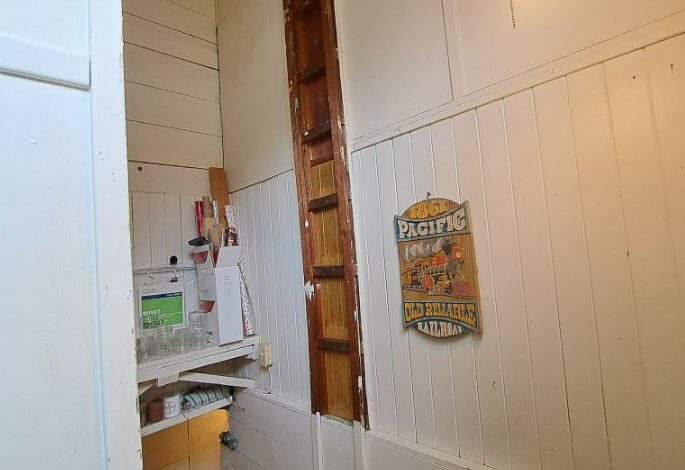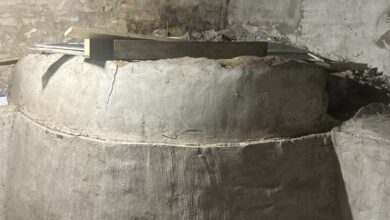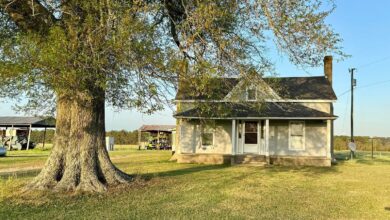
Is This A Secret Passage, A Weird Relic… Or Something Else Entirely?
If you’ve ever encountered an inexplicable wall-mounted ladder in a 1920s house, you’re not alone. Upon encountering such unusual features, one instinctively wonders of their homely function. There is only tree reason to install a permanent ladder straight into a wall. Was it functional, ornament, or something else?
Well, it seems as though there were a few of these ladders. Each served its own purpose depending on the home, location, and time needs. The following are a few of the most likely applications for a wall mounted ladder in 1920s homes.
Attic or Crawl Space Access
Probably the most convenient explanation, these ladders would have been useful implements for accessing attics or crawl spaces. Attics did not tend to be as finished spaces as we are used to today in the 1920s. They stored holiday decorations, old trunks and household basics that weren’t used every day.
Pull-down ladders had not made their way into general use yet. So a simple strong wall-mounted ladder was the space-saving option. This is probably the most immediately useful answer if the ladder goes up to a hatch in the ceiling.
Rooftop or Utility Access
In some houses, particularly in the country or single storey houses with shallow or flat roofs, the ladder served as a means of reaching the roof. This mattered for duties such as cleaning chimneys, examining the roof, or even hanging laundry on rooftop clotheslines. These activities had been routine practice in an age prior to electric dryers in every home.
Or the ladder could have gone up to a water tank, weather vane or other rooftop feature. These needed periodic maintenance.
Fire Escape Route
Fewer still were wall-mounted ladders that doubled as escape ladders. In multi-story homes with few staircases, a permanent ladder might provide a secondary means of escape. It was crucial in the event of a fire or other emergency.
This was usually found in commercial buildings or apartments. However, it sometimes made an appearance in homes as an understandable safety measure.

A Hayloft-Style Ladder for Storage
And now for where things get interesting — your ladder may look like a hay ladder, like you’d see in a barn. Though this may sound strange to do in a house, it’s not as off-base an idea as it may seem.
Lots of homes built in the 1920s, especially in the semi-rural or rural areas, had nothing more than auxiliary spaces to store animal feed, firewood, and in some cases, produce. If the property had farming history or was repurposed from a barn, carriage house or farm building, the ladder might have been part of a loft storage system.
Even in homes that weren’t used for agricultural tasks, upper storage lofts were often convenient. They were ideal for keeping overstock of canned goods, tools, supplies, or what-have-you. The design riffs on the hayloft ladder. It was slim, running up and down, permanently installed for immediate access.
Mechanical or Maintenance Access
Access to concealed mechanical systems—wiring, plumbing, or heating systems—frequently was routed through wall voids or attics. Long before modern HVAC and electrical systems, homeowners wanted simple ways to inspect or repair various parts of their houses.
A ladder to a ceiling hatch would have been necessary for this maintenance. This was particularly true when basements or crawl spaces were inadequate.
Quirky or Custom Home Design
Not every property has a simple explanation. Homeowners sometimes added ladders for easy access, according to preference or unique needs. Perhaps it opened to a reading nook, a child’s play loft, or a hobby workspace. These features were sheltered high above the action below.
In the 20’s and 30’s builders were notorious for using things like old outhouse wood. They repurposed doors, flooring, and other elements. They also went a little function NOR form to create weird and wonderfully tidy spaces.
So, What Is Yours?
When you have a wall-mounted ladder in your 1920s home, look for clues:
Is there a (hatch or elsewhere?)above it? (Attic or roof access)
Do I see the traces of old beams or of ancient joists? (Old loft storage)
Does the property include a legacy of farming? (Hayloft-style ladder)
Is it near wiring, pipes, or chimneys? (Maintenance ladder)
A Lovely Nostalgic Look Back
A wall-mounted ladder in your 1920s home, whether it’s an attic ladder left over from when a hayloft was part of the structure or is just an old utility muscle, is something almost all of us have seen in an 80-year-old house. It isn’t just a curious leftover — it’s a peek into the past and the kind of life most of us work hard to leave behind only recently.
It’s things like that, little puzzling details, that make old houses charming and interesting. They remind us how inventive people once were in making the most of their places back in the good old days.




